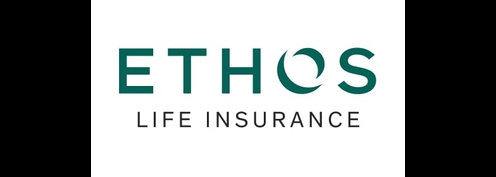- No credit check or income check required
- Flexible repayment terms
- Interest rates usually lower than a personal loan
How Much Can I Borrow From My Life Insurance Policy

Our evaluations and opinions are not influenced by our advertising relationships, but we may earn a commission from our partners’ links. This content is created by TIME Stamped, under TIME’s direction and produced in accordance with TIME’s editorial guidelines and overseen by TIME’s editorial staff. Learn more about it.
Most people buy life insurance primarily to provide financial security to their families in the event of their untimely passing. But in some cases, a life insurance policy can also be a lending source—a tool to get a loan for money that you can use for virtually anything.
Generally, you can borrow from your life insurance if both of the following conditions are met:
Life insurance policy loans often have lower interest rates and more favorable repayment requirements than personal loans. They don’t require a credit or income check, and won’t affect your credit score. But they may not be the right choice for everybody. Let’s take a closer look at how this source of lending works.
 |  | |
|---|---|---|
| Coverage | $2,000,000 | $2,000,000 |
| Ages | 20-85 | 20-85 |
| Terms | 10, 15, 20 or 30 years | 10, 15, 20 or 30 years |
The process for borrowing money from a life insurance policy varies from company to company. But in general, you can follow these steps.
Contact your insurance company or agent to determine if your policy allows loans, and if your cash value has reached the necessary level to permit borrowing.
The amount you can borrow depends on the amount of cash value in the policy and your insurer’s rules. Your insurer may allow you to borrow up to 90% of the cash value. For example, if the policy’s cash value is $15,000, you could borrow up to $13,500.
The insurer should let you know the interest rate, any repayment requirements, and other terms and conditions that may apply. Review the terms carefully, and contact the insurer or your agent if you have any questions.
Once you understand how much you can borrow from your life insurance policy, and the terms of such a loan, you might consider checking out alternative sources such as a loan from a bank or credit union. This is simply a matter of due diligence to ensure you’re getting the best possible deal when you borrow.
There also may be other ways you can access your cash value. Some insurers allow policyholders to make a withdrawal from the cash value (though this reduces the death benefit). And if you no longer need the policy, you can consider surrendering it to receive at least a portion of the cash value. Again, your insurer or agent can discuss these options with you.
Next, you’ll need to apply for the loan. Ask your insurer or agent how to get started. As a life insurance loan typically does not require a credit check or proof of income, you can expect the process to be a bit faster than that of a bank loan.
Life insurance policy loans typically do not have a set repayment schedule. But while it may seem tempting to put off repayments, doing so can risk a reduction of the policy’s death benefit or cancellation of the policy altogether. Policy cancellation could have tax implications as well.
Put in place a plan to ensure you pay back the loan. Ask your insurer how it prefers to receive payments. And if it’s an option, consider setting up automatic withdrawal of payments from your checking account.
As we’ve mentioned, only certain types of life insurance policies offer loans.
Loans are typically available with permanent life insurance policies. These are policies that remain in force until the policyholder’s death (hence “permanent”), provided the premium payments are maintained. Examples of permanent life insurance policies include whole life, universal life, indexed universal life, and variable life.
Permanent life insurance policies have a feature called cash value. Cash value acts as a savings/investment component. Part of the annual premium payment is used to fund the cash value, which may earn interest or investment dividends, depending on the specific policy type.
The cash value grows over time. Once it reaches a certain threshold set by the insurer, the policyholder can borrow from it.
Most life insurance policies are term life. As the label implies, these policies are in force only for a set term—maybe 10, 20, or 30 years. Term life policies are strictly insurance. There’s no cash value component, and no opportunity to take out a loan against the policy.
Some term life policies can be converted to whole life, meaning the policy will then have cash value. Of course, the cash value will need to accumulate over time before it’s made available for borrowing. Your insurer or agent can discuss this option with you.
It’s always important to consider the primary purpose of life insurance: to provide your family with some financial protection in the event of your death. So you should keep in mind the risks associated with borrowing against that. If you’re not careful, you could end up reducing the death benefit or losing coverage altogether.
With that in mind, there are times when borrowing from your life insurance policy may make sense.
Because life insurance loan approval is pretty straightforward, you may be able to access cash faster than with a bank loan.
Your policy’s cash value is used to secure the loan. Contrast this with a home equity loan or line of credit, which uses your home as collateral.
Insurers typically do not provide a repayment schedule, giving you flexibility in how you handle paying back the loan. Just make sure to pay it back, as allowing the principal and interest to add up can put you at risk of having the policy canceled.
Getting a loan from a bank usually requires an extensive screening process including a check of your credit history and proof of your income. Neither is typically required for a life insurance loan.
Unlike a bank, your life insurance provider usually will not provide a set repayment schedule for your loan. Instead, you can repay the loan on your own schedule—paying every other month, for instance, or making just one big payment per year.
Life insurance loan interest rates are usually a bit lower than what you can get for a personal loan from a bank. Policy loans can even rival what’s available with a home equity loan.
Taking out a loan against your policy lowers the face value of the policy. Put plainly, if you die with a loan balance (principal plus interest), the insurer will subtract that balance from your death benefit, reducing the amount of money your beneficiaries receive.
If, for whatever reason, you don’t repay the loan and the loan balance grows to exceed the policy’s cash value, the policy could lapse.
Life insurance policy loans are typically tax-free. That is, unless the loan exceeds the amount of your policy’s cost basis (the sum of premiums paid), and the policy lapses before you pay back the loan. In that case, any loan amount above the cost basis could be subject to income tax.
Information about tax implications is provided for information purposes only, and not as advice. Please consult with a certified tax preparer to understand your tax needs.
Considering how high interest rates are right now, you owe it to yourself to explore all options for borrowing money. You may even be able to tap into your life insurance policy. Permanent life insurance, such as whole life, universal life, or variable life, typically allows the policyholder to borrow against the policy’s cash value. Discuss this option with your agent or life insurance company to decide if it’s right for you.
Not paying back a life insurance loan can have multiple negative consequences, including:
When someone says, for example, “I have a $10,000 life insurance policy,” the $10,000 refers to the policy’s benefit, not its cash value. The cash value of that policy (or of any policy) is going to vary depending on the type of policy and how much interest or dividend it pays. Your insurer should be able to help you calculate the cash value.
The amount of money you can borrow from a life insurance policy is limited by the insurance company. It’s common for an insurer to allow policyholders to borrow up to 90% of a policy’s cash value, once the cash value reaches a certain level. In that case, if your policy has a cash value of $10,000, the insurer would let you borrow up to $9,000.
The information presented here is created by TIME Stamped and overseen by TIME editorial staff. To learn more, see our About Us page.



